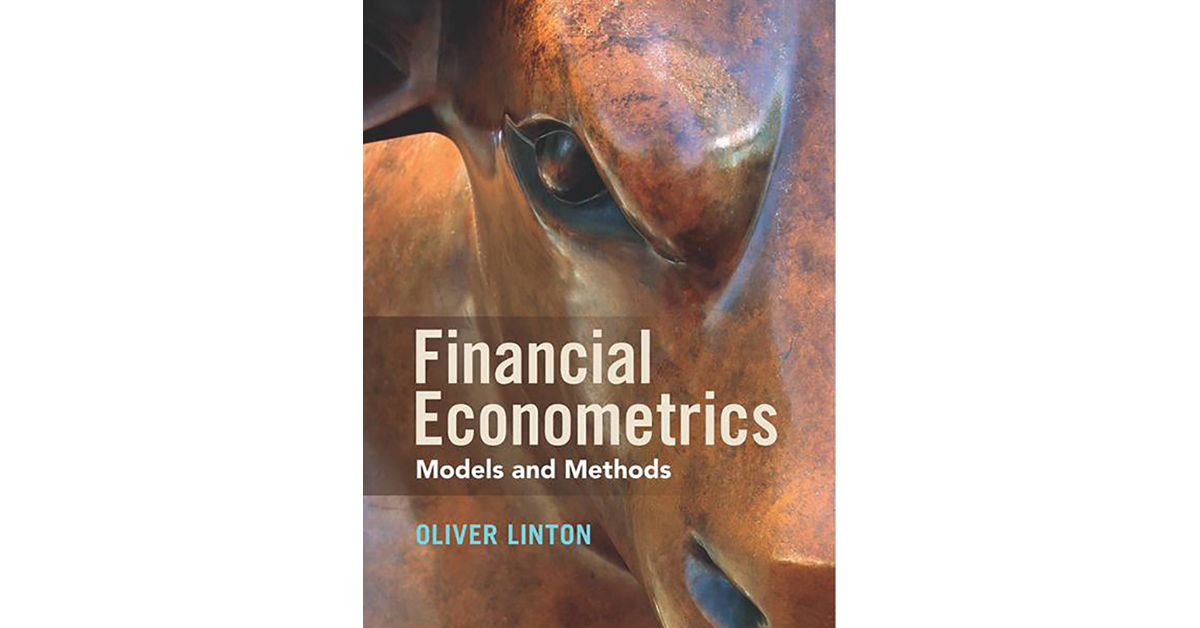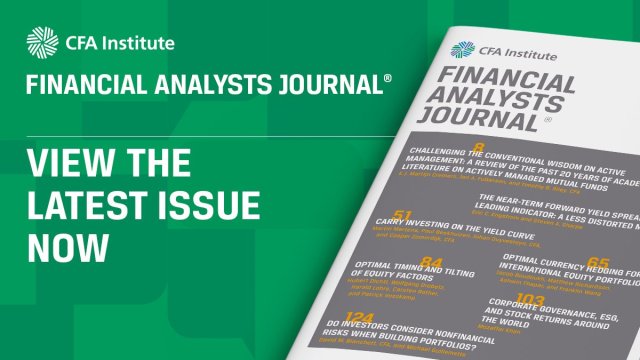[ad_1]
Financial Econometrics: Models and Methods. 2019. Oliver Linton. Cambridge University Press.
Investing is increasingly quantitative, with a close link between academic financial research and employable investment strategies. Practical understanding of econometrics is critical for the diffusion of financial knowledge. Financial research is translated into investment applications based on a firm’s knowledge of and comfort with statistical techniques. A strong econometrics base is necessary even to interpret the research presented in the Financial Analysts Journal; nevertheless, the translation from academic to practical knowledge is generally poor. Any useful new econometrics book for financial analysts needs to address this deficiency, balance technical rigor with applicability, and sharpen their skills so that they can keep abreast of research developments.
Financial Econometrics, by Oliver Linton of Cambridge University, is written for master’s degree students in finance and focuses on extending the path-breaking work presented in The Econometrics of Financial Markets by John Y. Campbell, Andrew W. Lo, and A. Craig MacKinlay (CLM). This is an ambitious and worthy goal, and Professor Linton provides a good reference work for key financial econometric topics and extensions over the past 20 years. As discussed in the book, some of CLM’s key findings have not stood the test of time, and new techniques have improved our understanding of important financial issues. Through practical exploration of key topics, Linton bridges the technical and applicability gaps with numerous examples of how key econometric techniques can be used.
Financial Econometrics will be useful for the small, focused
group of quants engaged in extensive financial research. It also may provide
the learning tools for a quant-focused portfolio manager or analyst who is not
on the frontline of actually doing the econometric work. Still, the analyst who
wants to better understand the explosion of journal articles and working papers
currently being generated on econometrics may find this book a mixed blessing.
The book’s balance is tilted to an academic audience, which creates a barrier
for those who want to focus on the practical. While the book reintroduces the
key topics of CLM that have influenced research for decades, practitioners may
have greater interest in econometric problems that are more relevant for their
current responsibilities.
The book is broken into multiple sections that address different financial econometric topics, as is the CLM work. Key topics include market efficiency, CAPM analysis, and factor testing. Additionally, the author covers present-value relationships, volatility, the yield curve, and tail estimation. Linton uses these key topics to introduce the econometric techniques employed to test specific finance propositions. For analysts who have read the original work on these topics or the CLM text, this book is a good companion with added clarity. Though it is not an introductory book, the author walks through the econometrics in a systematic fashion, carefully detailing how its tools are used. He also highlights definitions and keywords for further study. The reader will appreciate his strong theoretical guide for any research replication.
The close link between techniques and specific research
problems does make this work much more useful than a pure econometrics book
focused solely on techniques and tools. For a graduate student studying these issues,
Linton’s approach is a useful way to match techniques and topics. However,
readers more interested in learning how to interpret data and new research may
find his topic approach less helpful, even with his large number of examples.
This work also could have been enhanced if the author had provided more
discussion on the necessary programming for replicating tests and extending
analysis.
Readers would have benefited from the author’s knowledge of how
to not only construct but also interpret tests. For example, a critical issue
in financial econometrics is the proliferation of the “factor zoo,” the
explosion of academic studies that have found significant factors or risk premiums
in equity data. By some counts, this zoo has expanded to more than 400 factors,
yet when the associated research results are tested out of sample or
implemented under live trading conditions, their failure rate is high. Failing
to focus on out-of-sample testing, to account for overfitting, or to address
sample bias furthers the financial malpractice of using p-values. These
critical issues need direct attention so that users will not engage in poor
research practices.
By focusing on selected research topics, this book omits important discussions on the explosion of alternative data, as well as the extensive use of machine learning by many quant firms. An exploration by Linton of new statistical techniques and data analysis used in other disciplines that could be applied to investment problems would have been helpful. In his effort to update the classic CLM work, the author bound himself to topics that are not as pressing for the current quant analyst. Any reader should appreciate Linton’s careful writing and topic discussions, but to advance their research agenda, investment analysts still need another text that develops more current themes and topics.
If you liked this post, don’t forget to subscribe to the Enterprising Investor.
All posts are the opinion of the author. As such, they should not be construed as investment advice, nor do the opinions expressed necessarily reflect the views of CFA Institute or the author’s employer.
Image courtesy of Michael Strathen
Professional Learning for CFA Institute Members
Select articles are eligible for Professional Learning (PL) credit. Record credits easily using the CFA Institute Members App, available on iOS and Android.
[ad_2]
Image and article originally from blogs.cfainstitute.org. Read the original article here.


